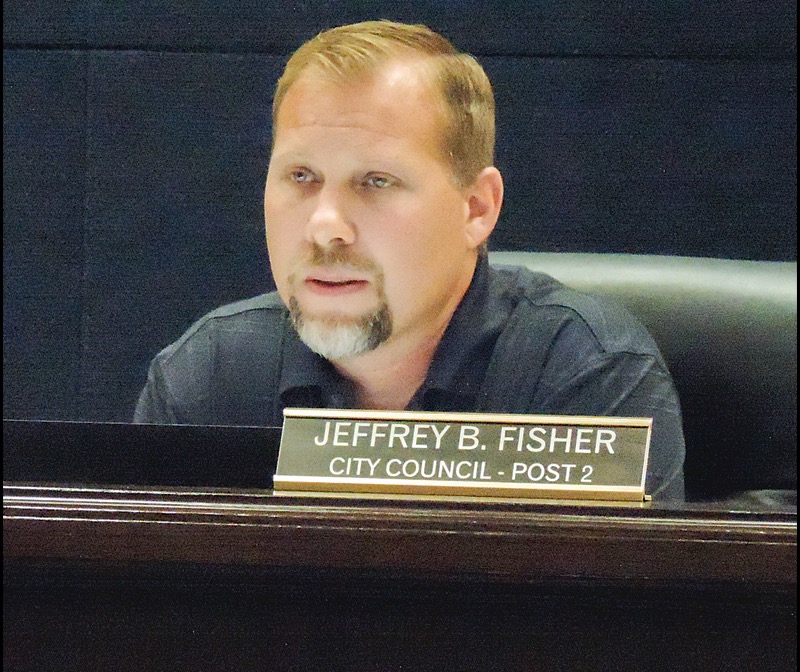Last week’s unanimous vote by the Senoia City Council will bring more retail and offices to the city’s downtown, and Councilman Jeff Fisher is glad to see the city continue to grow.
In an email to The Citizen, Fisher outlined his philosophy for the future of the city.
“As with many of the decisions rendered during the past 20 years, it is that time again when Senoia must make an expensive or perhaps costly choice in pursuit of future sustainable growth.
”Life isn’t all about prosperity. But as a community grows, so do its opportunities. Over the past 20 years Senoia has discovered ways to retain its small town values, historic character and charm, and preserve its sense of community and of place, while experiencing the difficulties associated with managing commercial and residential development. The value of sustainable growth, defined as encompassing economic, environmental and social elements, in this environment cannot be overstated. Sustainable growth has helped residents root their lives, giving them a strong sense of place and providing inspiration for the future. A delicate focus must remain on meeting the city’s current needs without compromising the ability of future generations to meet their own needs,” Fisher wrote.
He said the best way to predict and control the future is to create it yourself, which the city has done in the last few years.
“In 2000, there were approximately six commercial entities in the downtown area. Currently, the public enjoys the convenience of nearly 80 commercial entities. Yet, some community residents seem reluctant to admit that this type of cause-and-effect applies to the increase in area growth. When cities and organizations within the city continually advertise and market its surrounding environment [magazines, brochures, social media, newspaper, etc.] as one of the more livable places in Georgia and tout Senoia as being a tourist destination with “Walking Dead” tours and historic relevance—it should come as no surprise that people will want to move here as a direct result of this success,” he said.Fisher also cautioned about public battles over new development.
“As new residents express their freedom to steadily relocate, a city can ill afford to take growth development by development, protracted public battle by protracted public battle. An executable long-term plan for tempered growth must be achieved because it is simply unrealistic to think that you can stop all land development. People have a fundamental and legal right to develop their private properties for reasonable uses. The anti-growth mentality stems from a fear that additional growth will destroy the characteristics that initially drew current residents to Senoia, such as the small-town feel, family oriented atmosphere, historic character, a sense of place, etc.” Fisher wrote.
He said an anti-growth philosophy usually is not a succesful long term approach.
“Residents that fight change and growth have caused many cities to fall short of their potential because they were constantly reined in over the thought of growth being unpleasant. An anti-growth stance has never conclusively demonstrated any imperative that justifies its proposed strategies. In defiance of holistic long-term growth processes that have been in place since 2002, anti-growth advocates believe they know best how people should live. Don’t people have the freedom to pursue the right to happiness and relocate their families in a livable community? After all, some residents supporting anti-growth strategies inherently become part of the problem because they moved here as a direct benefit of initiated growth processes. A legitimate case against growth cannot be manifested when one is visibly a product of it,” he added.
In order to keep up with growth, Fisher said now is the time to deal with key infrastructure needs.
“It is an unfortunate fact that growth tends to strain infrastructure, which is fundamental to the daily life of citizens. If the city’s growth is allowed to go unmatched by its infrastructure it will become vulnerable over time. Senoia, which has grown from 1,800 residents in the 2000 Census count to about 4,000 today [an average of 129 new residents per year], will nearly max out its sewer capacity and wastewater pond within the next 7-10 years. The proposal of a 2 million gallons per day (MGD) regional sanitation plant would satisfy the needs of local residents for the next 50 years. The public discussions and city decisions to initially upgrade city infrastructure [sewer] in 2000-2002 at a cost of $6 million need to be revisited and expanded upon in the next 12-18 months. The approximate costs associated with the upgraded sanitation facility will be $10-11 million initially for a 1 MGD capacity, and an additional $3 million for future expansion to a 2 MGD capacity. The burden of cost and future construction will be shared by taxpayers and developers alike,” he said.
Fisher urged residents to get involved with the process to make Senoia a sustainable community.
“Senoia has yet to reach its long-term goal of becoming a sustainable community. Therefore, the shaping of public space and the future direction of the city is something in which every resident should consider taking stake in. The high capital cost to do construction in our area is extremely difficult for a community the size of Senoia and a more creative means must be obtained to offset these expenses. Creating and maintaining a high-quality distinctive environment does not come without its growing pains and its stresses. Strategic mixes of history, culture and capitalism must continue to be intermeshed to support a thriving city culture.
There is never a point where a successful city’s evolution stops and a neutral state exists. If you’re not moving forward you’re regressing. The key is making the right choices, with the right planning and design, and a focus on quality over quantity. It’s about how well we grow, not just by how much.”











Leave a Comment
You must be logged in to post a comment.